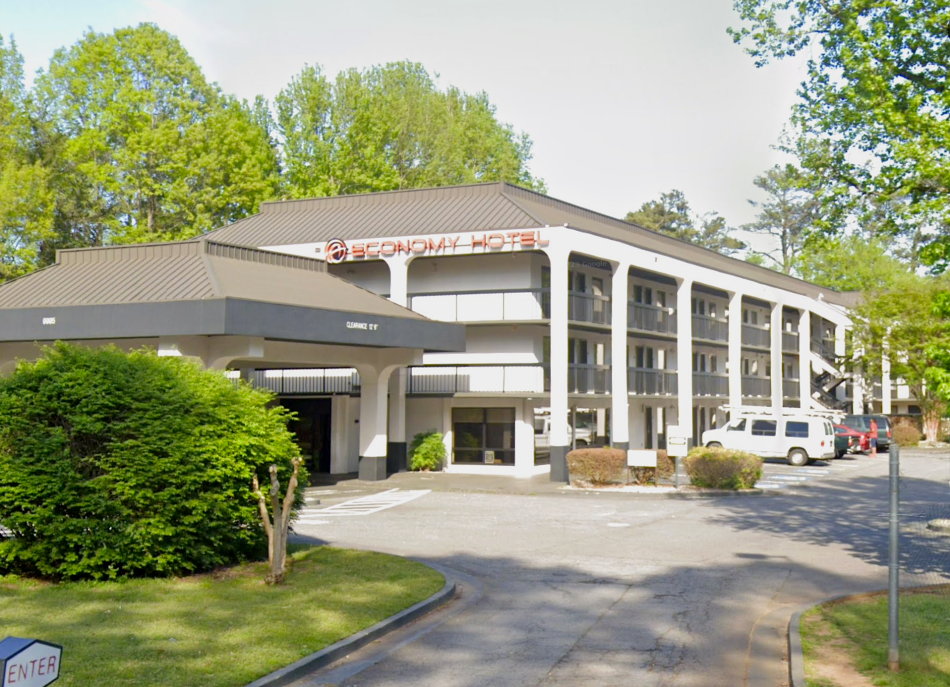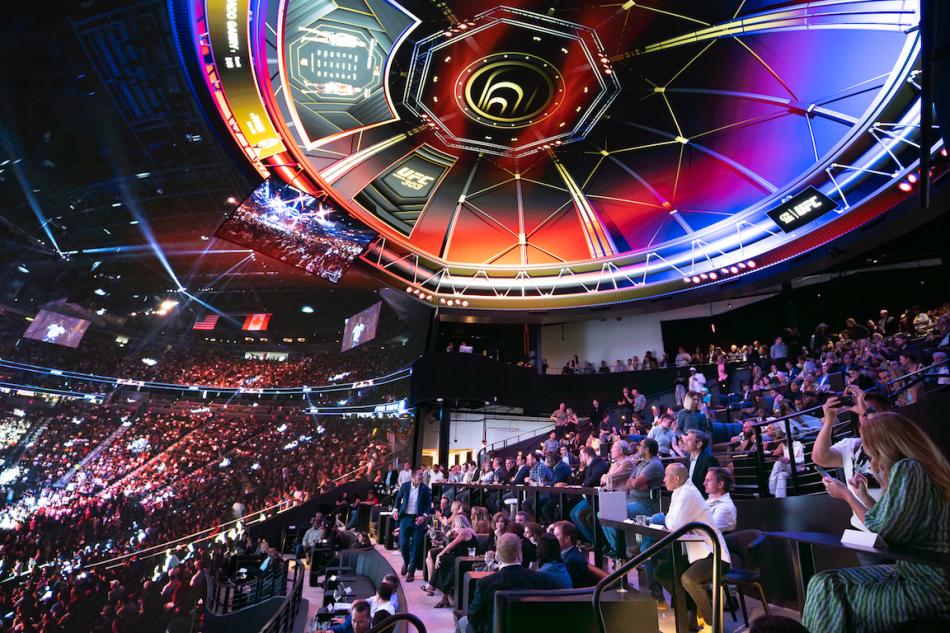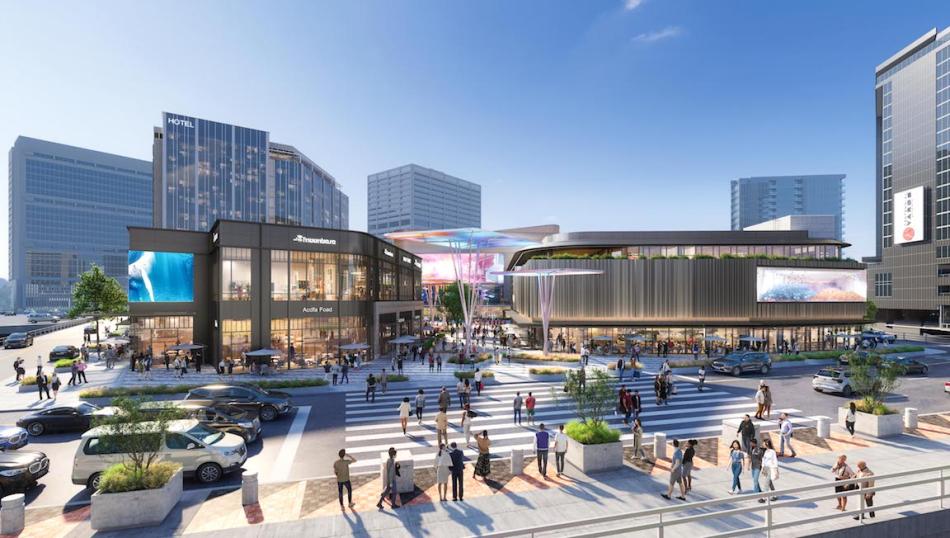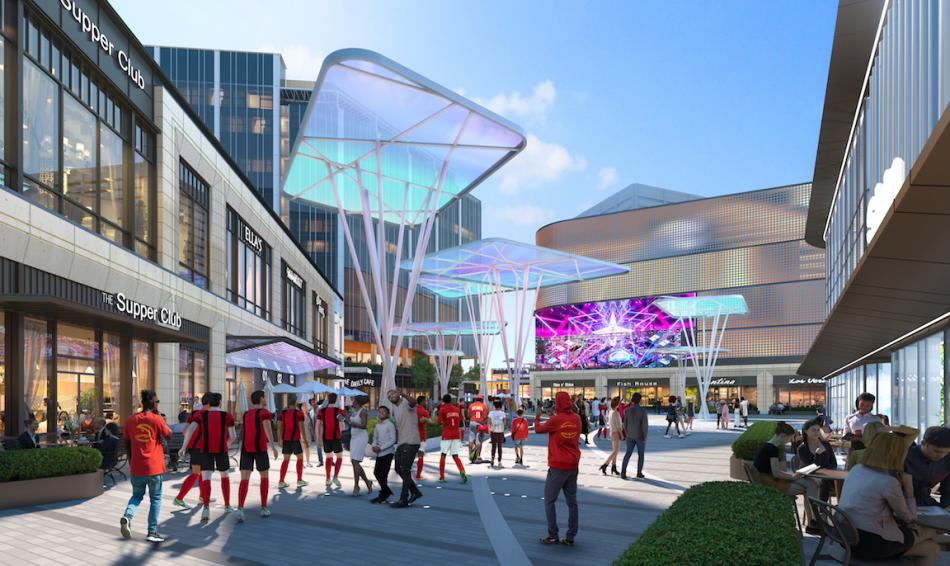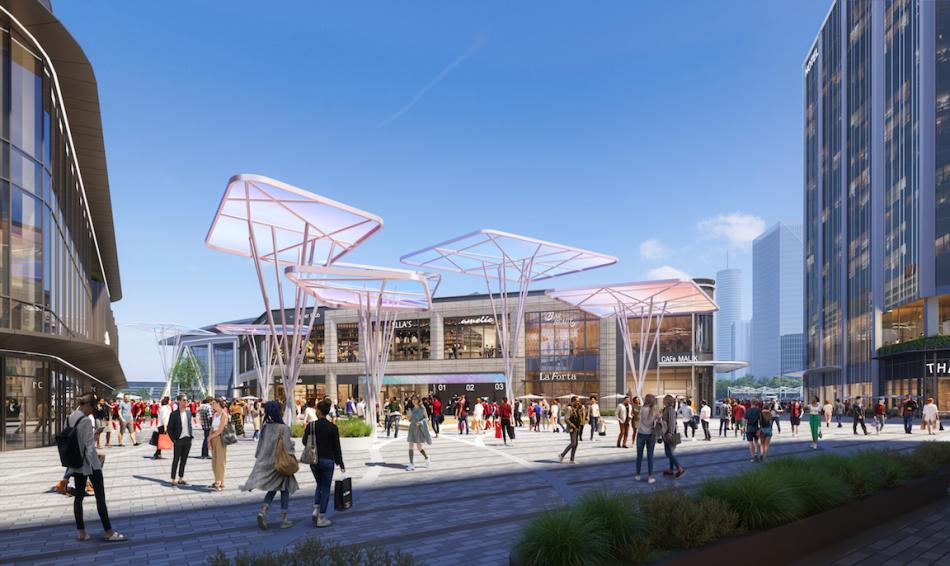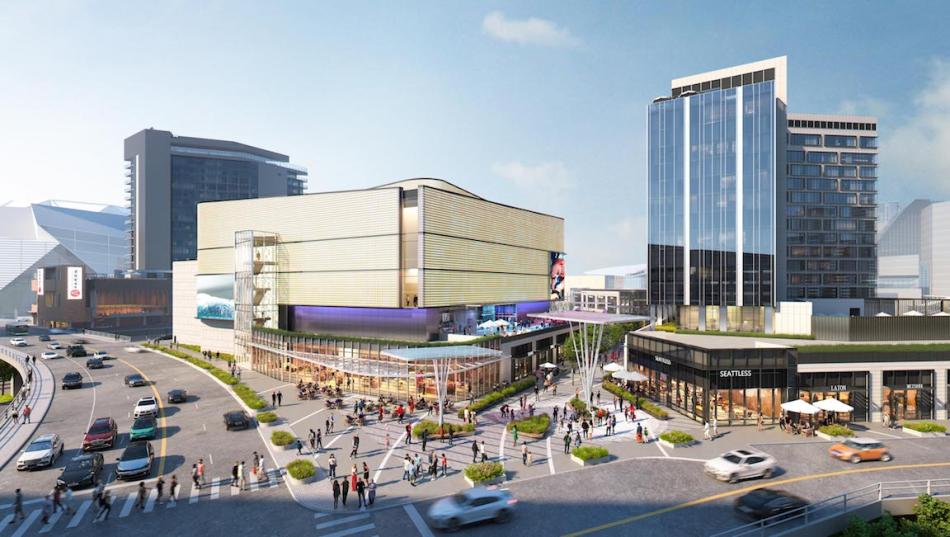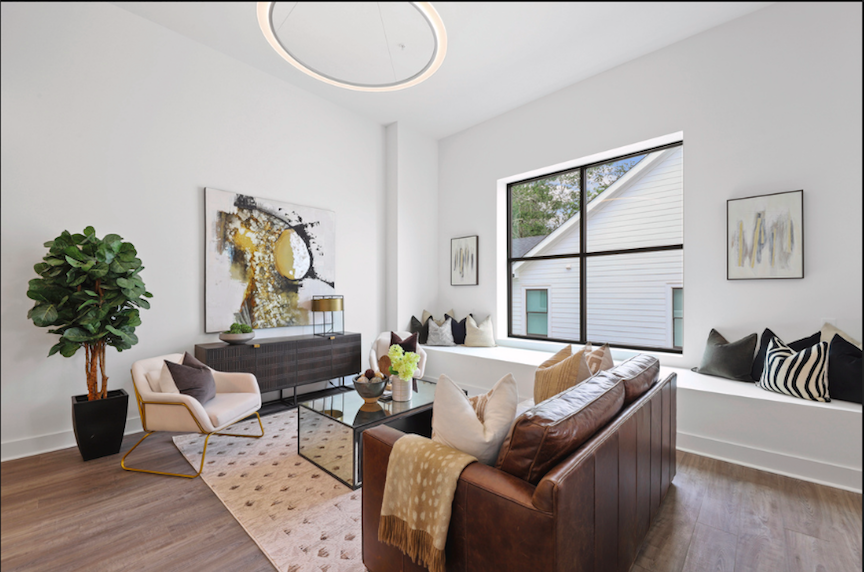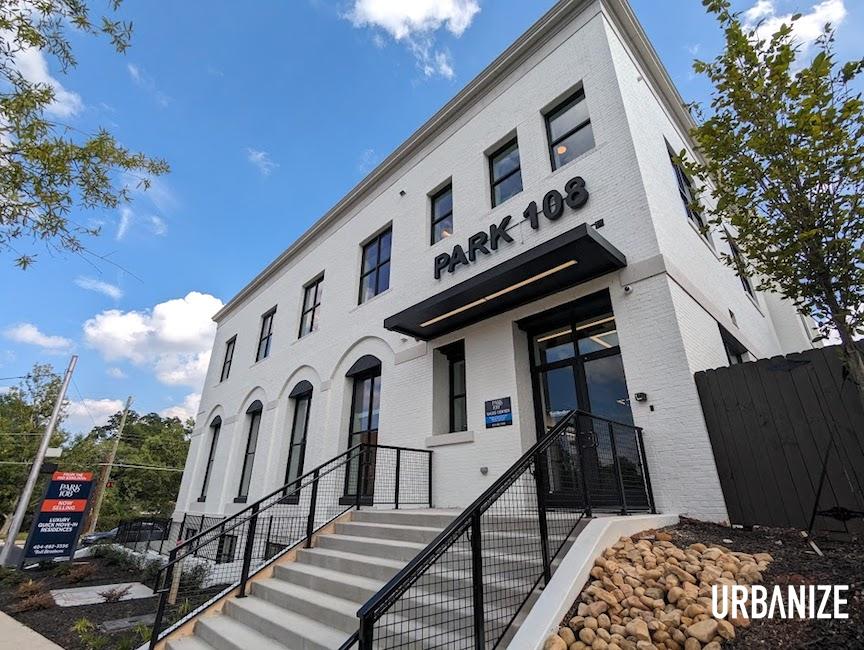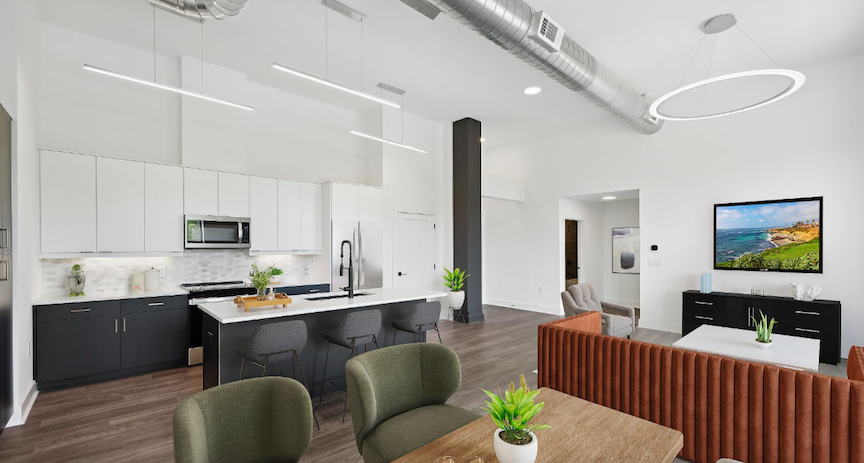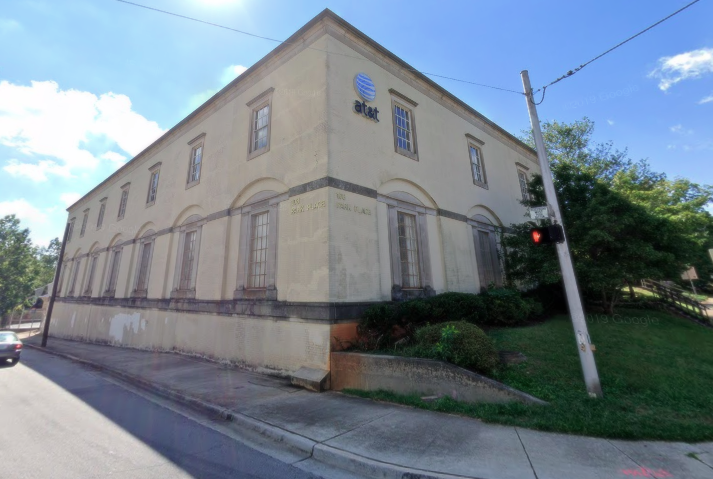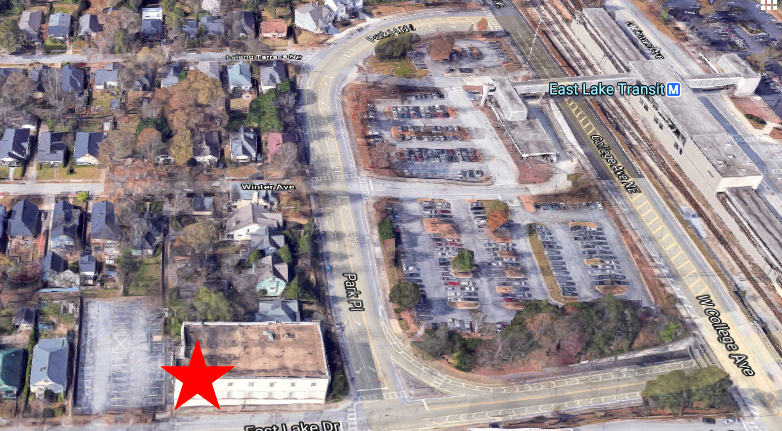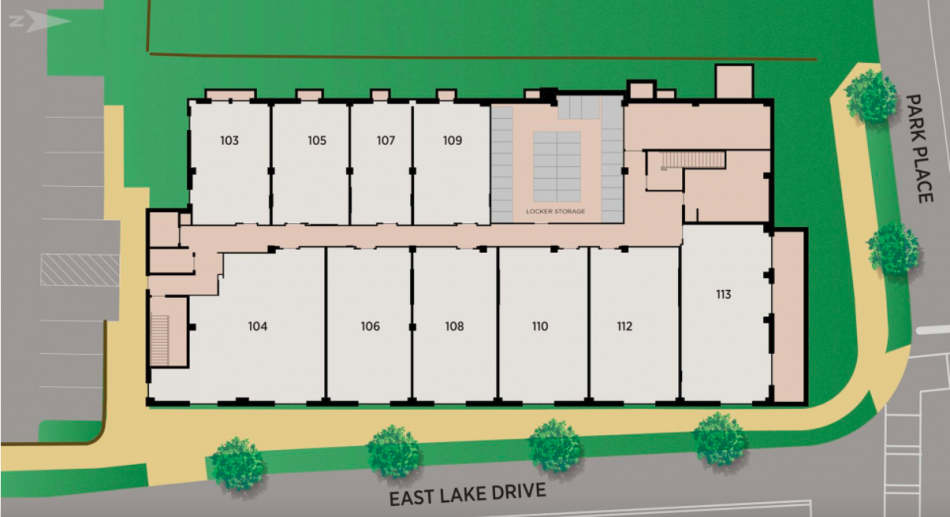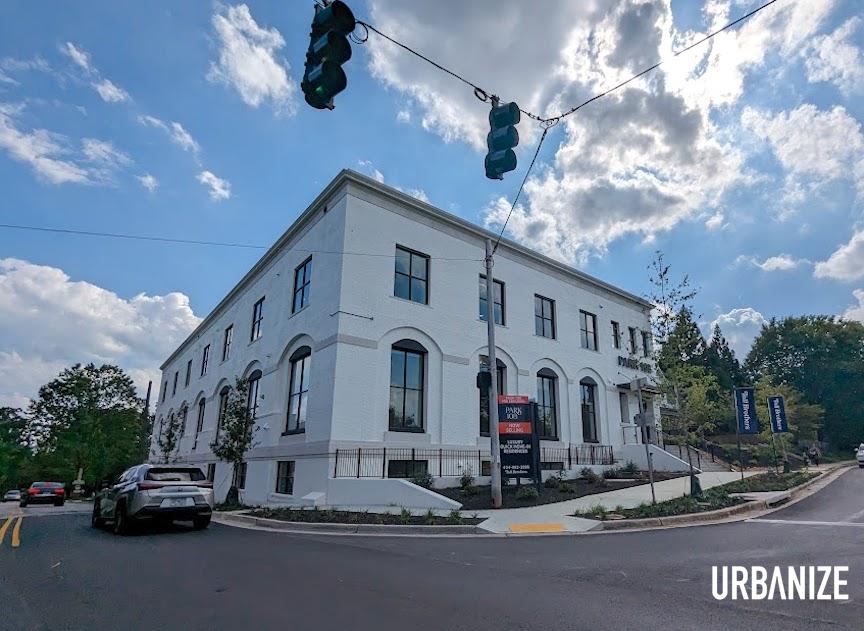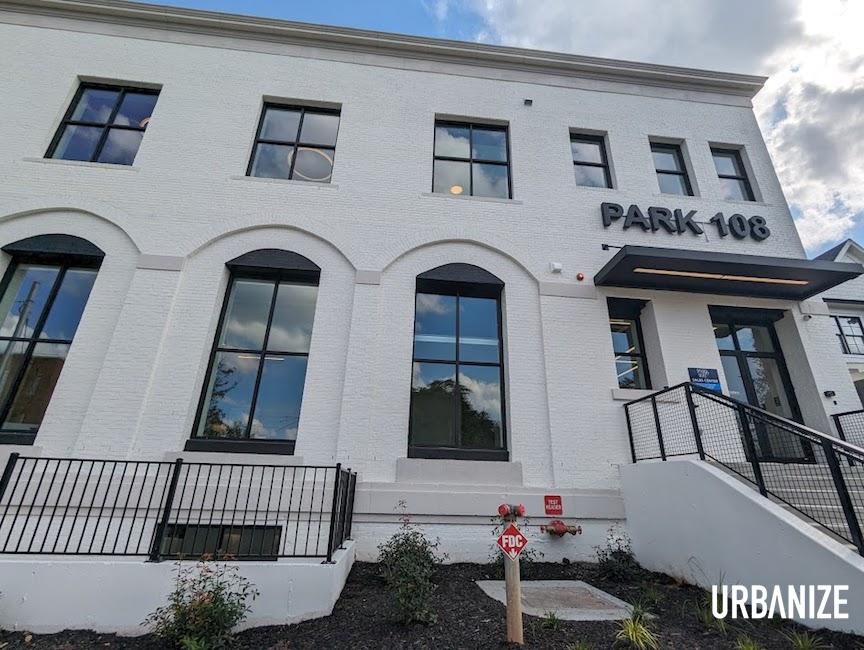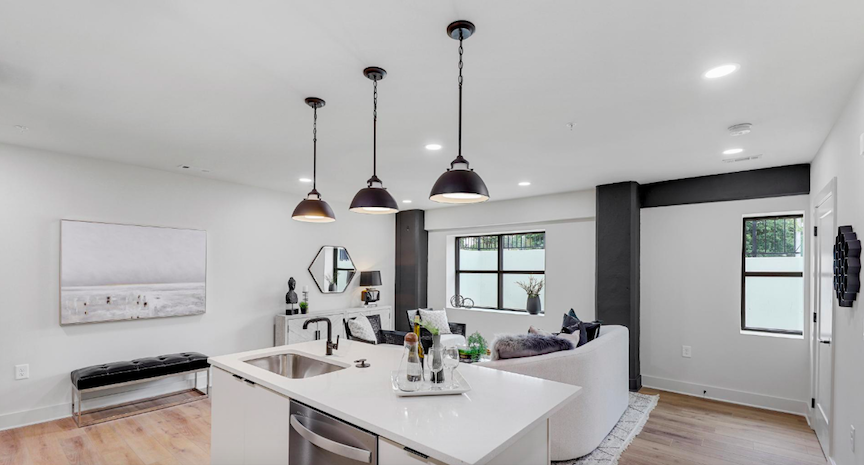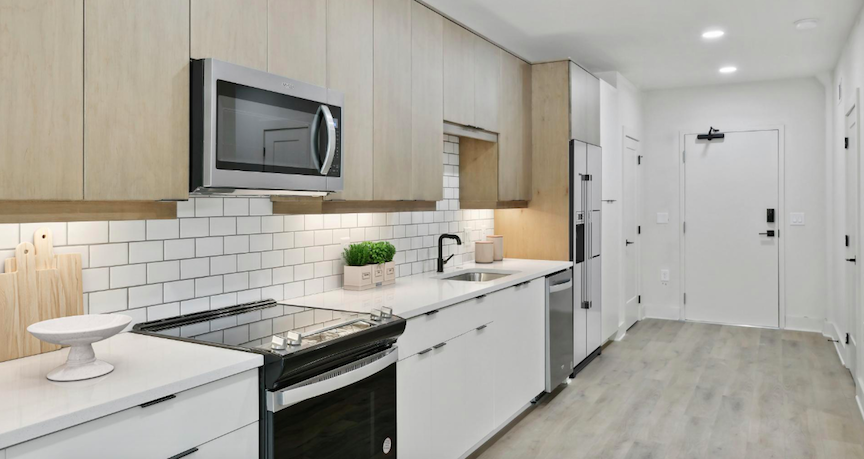REPORT: Hyundai To Invest $20B In U.S. Manufacturing
REPORT: Hyundai To Invest $20B In U.S. Manufacturing
South Korean automobile conglomerate Hyundai plans to build a $5B steel plant in Louisiana and an automotive plant in Georgia as part of a $20B investment in U.S. onshoring, according to CNBC.
South Korean automobile conglomerate Hyundai plans to build a $5B steel plant in Louisiana and an automotive plant in Georgia as part of a $20B investment in U.S. onshoring, according to CNBC. Read MoreBisnow News Feed
South Korean automobile conglomerate Hyundai plans to build a $5B steel plant in Louisiana and an automotive plant in Georgia as part of a $20B investment in U.S. onshoring, according to CNBC.
This Week’s Atlanta Deal Sheet: Chris Scott Heads To Newmark
This Week’s Atlanta Deal Sheet: Chris Scott Heads To Newmark
The head of Cresa’s Atlanta office has departed for a New York-based brokerage firm.
The head of Cresa’s Atlanta office has departed for a New York-based brokerage firm. Read MoreBisnow News Feed
The head of Cresa’s Atlanta office has departed for a New York-based brokerage firm.
Lone Star Hands Keys To EY’s Atlanta Tower Over To Lender
Lone Star Hands Keys To EY’s Atlanta Tower Over To Lender
A Dallas-based private equity giant has relinquished control of a 14-story Atlanta office building as its anchor tenant eyes the exit.
A Dallas-based private equity giant has relinquished control of a 14-story Atlanta office building as its anchor tenant eyes the exit. Read MoreBisnow News Feed
A Dallas-based private equity giant has relinquished control of a 14-story Atlanta office building as its anchor tenant eyes the exit.
City of Roswell orders problematic hotel to shut down, evacuate
City of Roswell orders problematic hotel to shut down, evacuate
City of Roswell orders problematic hotel to shut down, evacuate
Josh Green
Tue, 05/06/2025 – 15:19
The City of Roswell is shutting down a hotel with a sullied recent track record in a centralized location near Ga. Highway 400 and the city’s new public safety complex, according to officials.
Roswell’s Fire Chief and Chief Building Official formally issued today an Order to Vacate for the Economy Hotel at 9995 Old Dogwood Road, a three-story lodge about two and ½ miles east of Roswell’s historic downtown.
The city’s Fire Marshal’s Office documented multiple code violations and hazards that pose imminent safety threats to guests, staff, and public safety personnel during recent inspections. Those include fire hazards and structural deficiencies with the building, according to city officials.
The Economy Hotel has been ordered to cease operations and evacuate all its occupants by 5 p.m. Saturday.
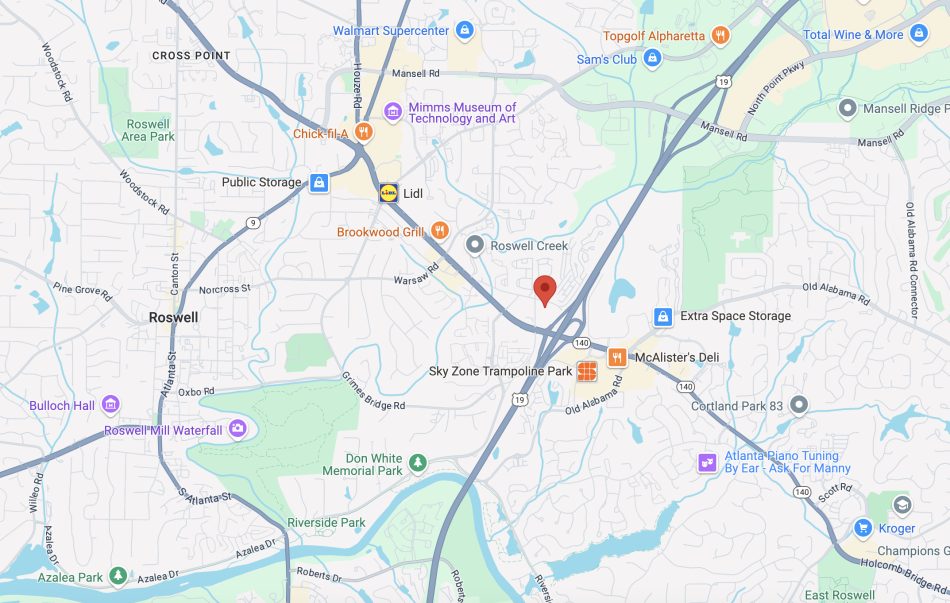
The hotel property’s centralized Roswell location (in red), in relation to Ga. Highway 400, Historic Downtown Roswell (at left), and other landmarks. Google Maps
Other strikes against the hotel include six men recently arrested there by the Roswell Police Department on charges of sexual assault and human trafficking, along with other criminal investigations of occupants and public safety complaints in recent years, per city officials.
The site is of particular interest to Roswell leaders, as the city’s new bond-funded Public Safety Headquarters is currently being built from the remodeled Summit Office Buildings next door. The “strategic, central location… offers immediate service coverage to areas of the city that receive the highest volume of public safety calls,” according to a city announcement today.
The public safety HQ project’s first phase recently wrapped renovations and completed staff relocations in April; the full remodel is scheduled to finish by the end of this year.
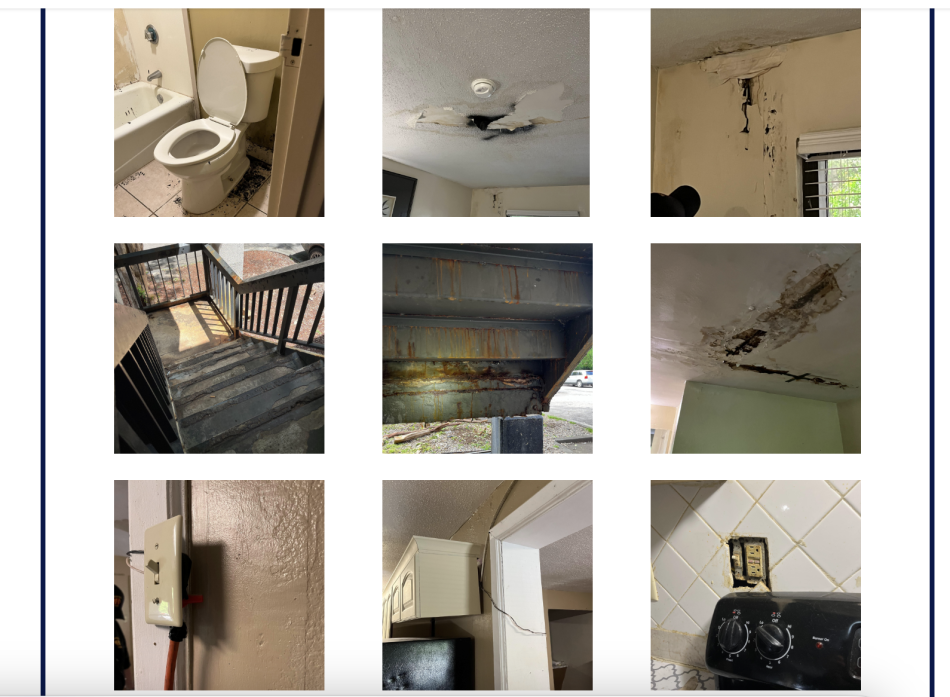
Conditions at the hotel found by Roswell’s Fire Marshal’s Office during inspections Sunday, according to city officials. Courtesy of City of Roswell
Specific problems documented at the Economy Hotel included malfunctioning emergency lighting, deficient fire alarm systems, exposed wiring, deteriorating stairs, crumbling ceilings, nonfunctioning toilets, and signs of “fungal growth due to moisture issues throughout the building and rooms,” among other issues, per city officials.
Roswell officials are reaching out to current hotel residents to inform them of the situation and offer short-term housing options.
…
Follow us on social media:
Twitter / Facebook/and now: Instagram
• Roswell news, discussion (Urbanize Atlanta)
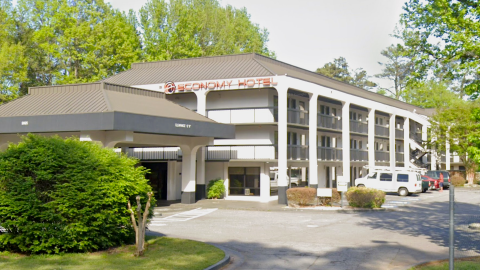
City of Roswell orders problematic hotel to shut down, evacuate
Josh Green
Tue, 05/06/2025 – 15:19
The City of Roswell is shutting down a hotel with a sullied recent track record in a centralized location near Ga. Highway 400 and the city’s new public safety complex, according to officials. Roswell’s Fire Chief and Chief Building Official formally issued today an Order to Vacate for the Economy Hotel at 9995 Old Dogwood Road, a three-story lodge about two and ½ miles east of Roswell’s historic downtown. The city’s Fire Marshal’s Office documented multiple code violations and hazards that pose imminent safety threats to guests, staff, and public safety personnel during recent inspections. Those include fire hazards and structural deficiencies with the building, according to city officials. The Economy Hotel has been ordered to cease operations and evacuate all its occupants by 5 p.m. Saturday.
Entry to the Economy Hotel at 9995 Old Dogwood Road in Roswell, as seen in 2023. Google Maps
The hotel property’s centralized Roswell location (in red), in relation to Ga. Highway 400, Historic Downtown Roswell (at left), and other landmarks. Google Maps
Other strikes against the hotel include six men recently arrested there by the Roswell Police Department on charges of sexual assault and human trafficking, along with other criminal investigations of occupants and public safety complaints in recent years, per city officials. The site is of particular interest to Roswell leaders, as the city’s new bond-funded Public Safety Headquarters is currently being built from the remodeled Summit Office Buildings next door. The “strategic, central location… offers immediate service coverage to areas of the city that receive the highest volume of public safety calls,” according to a city announcement today. The public safety HQ project’s first phase recently wrapped renovations and completed staff relocations in April; the full remodel is scheduled to finish by the end of this year.
Conditions at the hotel found by Roswell’s Fire Marshal’s Office during inspections Sunday, according to city officials. Courtesy of City of Roswell
Specific problems documented at the Economy Hotel included malfunctioning emergency lighting, deficient fire alarm systems, exposed wiring, deteriorating stairs, crumbling ceilings, nonfunctioning toilets, and signs of “fungal growth due to moisture issues throughout the building and rooms,” among other issues, per city officials. Roswell officials are reaching out to current hotel residents to inform them of the situation and offer short-term housing options. …Follow us on social media: Twitter / Facebook/and now: Instagram • Roswell news, discussion (Urbanize Atlanta)
Tags
9995 Old Dogwood Road
Economy Hotel
City of Roswell
Roswell News
OTP
Atlanta Suburbs
Atlanta Hotels
Ga. Highway 400
Old Dogwood Road
Images
The hotel property’s centralized Roswell location (in red), in relation to Ga. Highway 400, Historic Downtown Roswell (at left), and other landmarks. Google Maps
Entry to the Economy Hotel at 9995 Old Dogwood Road in Roswell, as seen in 2023. Google Maps
Conditions at the hotel found by Roswell’s Fire Marshal’s Office during inspections Sunday, according to city officials. Courtesy of City of Roswell
Subtitle
Economy Hotel property is adjacent to city’s new public safety HQ complex
Neighborhood
Roswell
Background Image
Image
Before/After Images
Sponsored Post
Off Read More
City of Roswell orders problematic hotel to shut down, evacuate
Josh Green
Tue, 05/06/2025 – 15:19
The City of Roswell is shutting down a hotel with a sullied recent track record in a centralized location near Ga. Highway 400 and the city’s new public safety complex, according to officials. Roswell’s Fire Chief and Chief Building Official formally issued today an Order to Vacate for the Economy Hotel at 9995 Old Dogwood Road, a three-story lodge about two and ½ miles east of Roswell’s historic downtown. The city’s Fire Marshal’s Office documented multiple code violations and hazards that pose imminent safety threats to guests, staff, and public safety personnel during recent inspections. Those include fire hazards and structural deficiencies with the building, according to city officials. The Economy Hotel has been ordered to cease operations and evacuate all its occupants by 5 p.m. Saturday.
Entry to the Economy Hotel at 9995 Old Dogwood Road in Roswell, as seen in 2023. Google Maps
The hotel property’s centralized Roswell location (in red), in relation to Ga. Highway 400, Historic Downtown Roswell (at left), and other landmarks. Google Maps
Other strikes against the hotel include six men recently arrested there by the Roswell Police Department on charges of sexual assault and human trafficking, along with other criminal investigations of occupants and public safety complaints in recent years, per city officials. The site is of particular interest to Roswell leaders, as the city’s new bond-funded Public Safety Headquarters is currently being built from the remodeled Summit Office Buildings next door. The “strategic, central location… offers immediate service coverage to areas of the city that receive the highest volume of public safety calls,” according to a city announcement today. The public safety HQ project’s first phase recently wrapped renovations and completed staff relocations in April; the full remodel is scheduled to finish by the end of this year.
Conditions at the hotel found by Roswell’s Fire Marshal’s Office during inspections Sunday, according to city officials. Courtesy of City of Roswell
Specific problems documented at the Economy Hotel included malfunctioning emergency lighting, deficient fire alarm systems, exposed wiring, deteriorating stairs, crumbling ceilings, nonfunctioning toilets, and signs of “fungal growth due to moisture issues throughout the building and rooms,” among other issues, per city officials. Roswell officials are reaching out to current hotel residents to inform them of the situation and offer short-term housing options. …Follow us on social media: Twitter / Facebook/and now: Instagram • Roswell news, discussion (Urbanize Atlanta)
Tags
9995 Old Dogwood Road
Economy Hotel
City of Roswell
Roswell News
OTP
Atlanta Suburbs
Atlanta Hotels
Ga. Highway 400
Old Dogwood Road
Images
The hotel property’s centralized Roswell location (in red), in relation to Ga. Highway 400, Historic Downtown Roswell (at left), and other landmarks. Google Maps
Entry to the Economy Hotel at 9995 Old Dogwood Road in Roswell, as seen in 2023. Google Maps
Conditions at the hotel found by Roswell’s Fire Marshal’s Office during inspections Sunday, according to city officials. Courtesy of City of Roswell
Subtitle
Economy Hotel property is adjacent to city’s new public safety HQ complex
Neighborhood
Roswell
Background Image
Image
Before/After Images
Sponsored Post
Off
Centennial Yards’ ‘immersive dome’ reaches construction milestone
Centennial Yards’ ‘immersive dome’ reaches construction milestone
Centennial Yards’ ‘immersive dome’ reaches construction milestone
Josh Green
Tue, 05/06/2025 – 14:02
An entertainment option unique to Atlanta—and to the eastern United States, in fact—is set to reach a construction milestone this month.
Global tech company Cosm and Centennial Yards Company are scheduled to officially mark the beginning of development on Cosm Atlanta with a steel rising ceremony May 15 at the entertainment zone rising from the former Gulch, a site that’s seen a flurry of infrastructure construction activity all winter and spring.
Situated adjacent to State Farm Arena and Mercedes-Benz Stadium, Cosm Atlanta will mark the third venue for Cosm and the first in the eastern U.S., following similar concepts at Hollywood Park in Los Angeles and Grandscape in The Colony in Texas, north of downtown Dallas.
Topped with an 87-foot diameter, 12K+ LED “immersive dome,” Cosm Atlanta was designed by architecture firm Gensler, which also designed the nearby Signia by Hilton tower over The Benz, Atlanta’s tallest new hotel in four decades. Project officials say the Atlanta venue will expand on the foundational design of those in California and Texas while incorporating character that reflects Centennial Yards and the city at large.
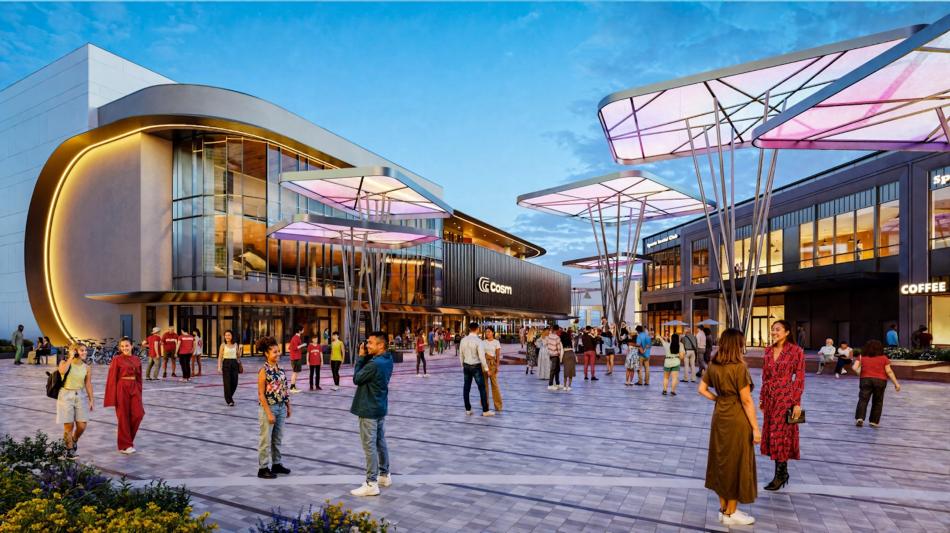
Plans for the Cosm venue’s exterior, at left. Courtesy of Centennial Yards; images by Apex Visualization
Centennial Yards Company signed a long-term lease last summer with the immersive technology, entertainment, and media company to create the 70,000-square-foot, three-level venue. Project leaders have predicted it will become downtown’s next marquee attraction and a key part of the forthcoming Sports and Entertainment District at Centennial Yards.
The company uses a technology called Shared Reality to take visitors “beyond the front row” for major sporting contests, live performances, art shows, and other events, alongside a food-and-beverage program described as “elevated.”
Cosm is the first confirmed tenant at Centennial Yards’ Sports and Entertainment District, which broke ground last year in hopes of being open in time for FIFA World Cup matches in Atlanta, beginning in June 2026. Several cranes hover over the construction site now.
Spread across 7.5 acres, the roughly 470,000-square-foot mixed-use component is expected to include a 230-room, flagship hotel adjacent to the Atlanta Hawks’ arena and a large plaza. A two-story retail building and music venue are also in the plans.
The estimated $5 billion project’s broader goal is to transform 50 acres around the chasm the Gulch had been for generations into a vibrant, walkable area for visitors and residents.
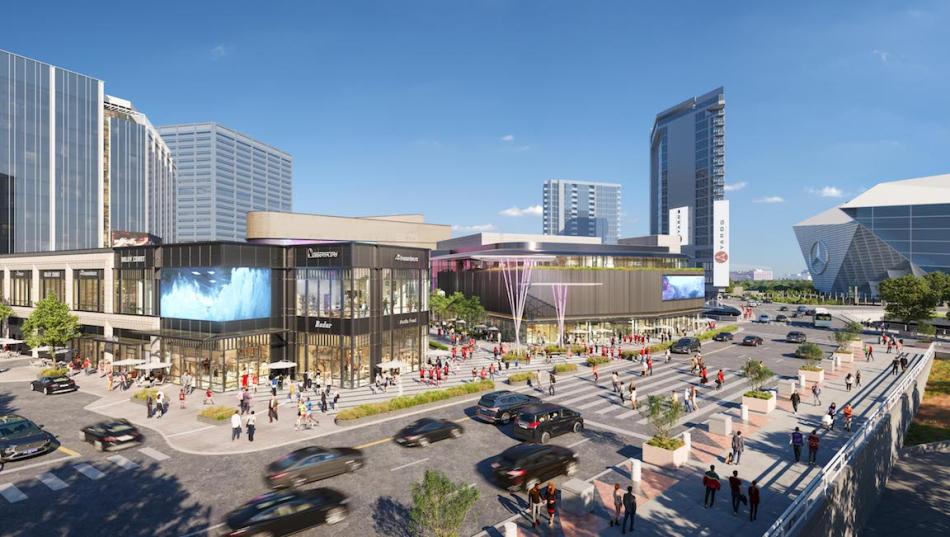
How the entertainment district is expected to meet Centennial Olympic Park Drive, near State Farm Arena. Courtesy of Centennial Yards; images by Apex Visualization
Centennial Yards’ first two towers—the 292-key Hotel Phoenix, and a 304-apartment building, The Mitchell, both 19 stories—are nearing the final phases of construction. Centennial Yards reps told Urbanize Atlanta last month the apartments on pace to debut this summer, followed by the district’s first hotel sometime this fall.
We’ve asked Cosm reps this week for a fuller construction timeline and ETA, and we’ll update this story with any additional details that come.
Cosm has inked official partnerships with ESPN, the NBA, NBC Sports, TNT Sports, FOX Sports, the UFC, and others. Beyond live sports, the venue’s programming will include Cirque du Soleil’s production “O” and what are described as immersive art experiences from Cosm Studios Creator Program members.
…
Follow us on social media:
Twitter / Facebook/and now: Instagram
• Downtown news, discussion (Urbanize Atlanta)
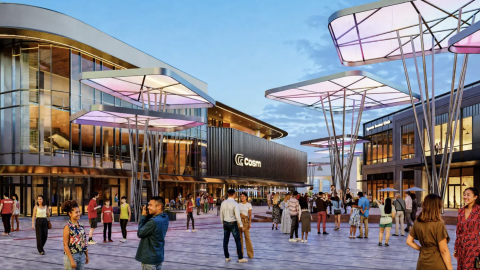
Centennial Yards’ ‘immersive dome’ reaches construction milestone
Josh Green
Tue, 05/06/2025 – 14:02
An entertainment option unique to Atlanta—and to the eastern United States, in fact—is set to reach a construction milestone this month. Global tech company Cosm and Centennial Yards Company are scheduled to officially mark the beginning of development on Cosm Atlanta with a steel rising ceremony May 15 at the entertainment zone rising from the former Gulch, a site that’s seen a flurry of infrastructure construction activity all winter and spring. Situated adjacent to State Farm Arena and Mercedes-Benz Stadium, Cosm Atlanta will mark the third venue for Cosm and the first in the eastern U.S., following similar concepts at Hollywood Park in Los Angeles and Grandscape in The Colony in Texas, north of downtown Dallas.Topped with an 87-foot diameter, 12K+ LED “immersive dome,” Cosm Atlanta was designed by architecture firm Gensler, which also designed the nearby Signia by Hilton tower over The Benz, Atlanta’s tallest new hotel in four decades. Project officials say the Atlanta venue will expand on the foundational design of those in California and Texas while incorporating character that reflects Centennial Yards and the city at large.
Plans for the Cosm venue’s exterior, at left. Courtesy of Centennial Yards; images by Apex Visualization
Courtesy of Cosm
Centennial Yards Company signed a long-term lease last summer with the immersive technology, entertainment, and media company to create the 70,000-square-foot, three-level venue. Project leaders have predicted it will become downtown’s next marquee attraction and a key part of the forthcoming Sports and Entertainment District at Centennial Yards. The company uses a technology called Shared Reality to take visitors “beyond the front row” for major sporting contests, live performances, art shows, and other events, alongside a food-and-beverage program described as “elevated.”Cosm is the first confirmed tenant at Centennial Yards’ Sports and Entertainment District, which broke ground last year in hopes of being open in time for FIFA World Cup matches in Atlanta, beginning in June 2026. Several cranes hover over the construction site now. Spread across 7.5 acres, the roughly 470,000-square-foot mixed-use component is expected to include a 230-room, flagship hotel adjacent to the Atlanta Hawks’ arena and a large plaza. A two-story retail building and music venue are also in the plans.The estimated $5 billion project’s broader goal is to transform 50 acres around the chasm the Gulch had been for generations into a vibrant, walkable area for visitors and residents.
How the entertainment district is expected to meet Centennial Olympic Park Drive, near State Farm Arena. Courtesy of Centennial Yards; images by Apex Visualization
Courtesy of Cosm
Centennial Yards’ first two towers—the 292-key Hotel Phoenix, and a 304-apartment building, The Mitchell, both 19 stories—are nearing the final phases of construction. Centennial Yards reps told Urbanize Atlanta last month the apartments on pace to debut this summer, followed by the district’s first hotel sometime this fall. We’ve asked Cosm reps this week for a fuller construction timeline and ETA, and we’ll update this story with any additional details that come. Cosm has inked official partnerships with ESPN, the NBA, NBC Sports, TNT Sports, FOX Sports, the UFC, and others. Beyond live sports, the venue’s programming will include Cirque du Soleil’s production “O” and what are described as immersive art experiences from Cosm Studios Creator Program members….Follow us on social media: Twitter / Facebook/and now: Instagram • Downtown news, discussion (Urbanize Atlanta)
Tags
95 Centennial Olympic Park Drive
Centennial Yards Hotel
250 MARTIN Luther King Jr. Drive SW
Centennial Yards apartments
Cooper Carry
Gulch
Nelson Street Bridge
Stevens & Wilkinson
CIM Group
Centennial Yards
Castleberry Hill
South Downtown
South Dwntn
Ted Turner Drive
Foster + Partners
Brian McGowan
Atlanta Construction
Atlanta Development
Good Van Slyke Architecture
Perkins & Will
Perkins&Will
TVS
SOM Design
Skidmore Owings & Merrill
Atlanta Hotels
World Cup
World Cup 2026
Cosm
Shared Reality
Tony Ressler
Downtown Development
downtown construction
Gensler
Images
Main entry point to the entertainment district along Centennial Olympic Park Drive. Courtesy of Centennial Yards; images by Apex Visualization
How the entertainment district is expected to meet Centennial Olympic Park Drive, near State Farm Arena. Courtesy of Centennial Yards; images by Apex Visualization
Plans for the Cosm venue’s exterior, at left. Courtesy of Centennial Yards; images by Apex Visualization
Courtesy of Centennial Yards Company
Courtesy of Centennial Yards Company
Planned look of a plaza area at Centennial Yards’ entertainment district. Courtesy of Centennial Yards; images by Apex Visualization
Courtesy of Cosm
Courtesy of Cosm
How the next Centennial Yards phase is expected to meet Martin Luther King Jr. Drive (left), with active rail lines separating it from the Phoenix hotel tower (back left) and The Benz. Courtesy of Centennial Yards; images by Apex Visualization
Subtitle
Cosm Atlanta will mark third such venue in the U.S., following Los Angeles, Dallas
Neighborhood
Downtown
Background Image
Image
Associated Project
Centennial Yards – 125 Ted Turner Dr SW
Before/After Images
Sponsored Post
Off Read More
Centennial Yards’ ‘immersive dome’ reaches construction milestone
Josh Green
Tue, 05/06/2025 – 14:02
An entertainment option unique to Atlanta—and to the eastern United States, in fact—is set to reach a construction milestone this month. Global tech company Cosm and Centennial Yards Company are scheduled to officially mark the beginning of development on Cosm Atlanta with a steel rising ceremony May 15 at the entertainment zone rising from the former Gulch, a site that’s seen a flurry of infrastructure construction activity all winter and spring. Situated adjacent to State Farm Arena and Mercedes-Benz Stadium, Cosm Atlanta will mark the third venue for Cosm and the first in the eastern U.S., following similar concepts at Hollywood Park in Los Angeles and Grandscape in The Colony in Texas, north of downtown Dallas.Topped with an 87-foot diameter, 12K+ LED “immersive dome,” Cosm Atlanta was designed by architecture firm Gensler, which also designed the nearby Signia by Hilton tower over The Benz, Atlanta’s tallest new hotel in four decades. Project officials say the Atlanta venue will expand on the foundational design of those in California and Texas while incorporating character that reflects Centennial Yards and the city at large.
Plans for the Cosm venue’s exterior, at left. Courtesy of Centennial Yards; images by Apex Visualization
Courtesy of Cosm
Centennial Yards Company signed a long-term lease last summer with the immersive technology, entertainment, and media company to create the 70,000-square-foot, three-level venue. Project leaders have predicted it will become downtown’s next marquee attraction and a key part of the forthcoming Sports and Entertainment District at Centennial Yards. The company uses a technology called Shared Reality to take visitors “beyond the front row” for major sporting contests, live performances, art shows, and other events, alongside a food-and-beverage program described as “elevated.”Cosm is the first confirmed tenant at Centennial Yards’ Sports and Entertainment District, which broke ground last year in hopes of being open in time for FIFA World Cup matches in Atlanta, beginning in June 2026. Several cranes hover over the construction site now. Spread across 7.5 acres, the roughly 470,000-square-foot mixed-use component is expected to include a 230-room, flagship hotel adjacent to the Atlanta Hawks’ arena and a large plaza. A two-story retail building and music venue are also in the plans.The estimated $5 billion project’s broader goal is to transform 50 acres around the chasm the Gulch had been for generations into a vibrant, walkable area for visitors and residents.
How the entertainment district is expected to meet Centennial Olympic Park Drive, near State Farm Arena. Courtesy of Centennial Yards; images by Apex Visualization
Courtesy of Cosm
Centennial Yards’ first two towers—the 292-key Hotel Phoenix, and a 304-apartment building, The Mitchell, both 19 stories—are nearing the final phases of construction. Centennial Yards reps told Urbanize Atlanta last month the apartments on pace to debut this summer, followed by the district’s first hotel sometime this fall. We’ve asked Cosm reps this week for a fuller construction timeline and ETA, and we’ll update this story with any additional details that come. Cosm has inked official partnerships with ESPN, the NBA, NBC Sports, TNT Sports, FOX Sports, the UFC, and others. Beyond live sports, the venue’s programming will include Cirque du Soleil’s production “O” and what are described as immersive art experiences from Cosm Studios Creator Program members….Follow us on social media: Twitter / Facebook/and now: Instagram • Downtown news, discussion (Urbanize Atlanta)
Tags
95 Centennial Olympic Park Drive
Centennial Yards Hotel
250 MARTIN Luther King Jr. Drive SW
Centennial Yards apartments
Cooper Carry
Gulch
Nelson Street Bridge
Stevens & Wilkinson
CIM Group
Centennial Yards
Castleberry Hill
South Downtown
South Dwntn
Ted Turner Drive
Foster + Partners
Brian McGowan
Atlanta Construction
Atlanta Development
Good Van Slyke Architecture
Perkins & Will
Perkins&Will
TVS
SOM Design
Skidmore Owings & Merrill
Atlanta Hotels
World Cup
World Cup 2026
Cosm
Shared Reality
Tony Ressler
Downtown Development
downtown construction
Gensler
Images
Main entry point to the entertainment district along Centennial Olympic Park Drive. Courtesy of Centennial Yards; images by Apex Visualization
How the entertainment district is expected to meet Centennial Olympic Park Drive, near State Farm Arena. Courtesy of Centennial Yards; images by Apex Visualization
Plans for the Cosm venue’s exterior, at left. Courtesy of Centennial Yards; images by Apex Visualization
Courtesy of Centennial Yards Company
Courtesy of Centennial Yards Company
Planned look of a plaza area at Centennial Yards’ entertainment district. Courtesy of Centennial Yards; images by Apex Visualization
Courtesy of Cosm
Courtesy of Cosm
How the next Centennial Yards phase is expected to meet Martin Luther King Jr. Drive (left), with active rail lines separating it from the Phoenix hotel tower (back left) and The Benz. Courtesy of Centennial Yards; images by Apex Visualization
Subtitle
Cosm Atlanta will mark third such venue in the U.S., following Los Angeles, Dallas
Neighborhood
Downtown
Background Image
Image
Associated Project
Centennial Yards – 125 Ted Turner Dr SW
Before/After Images
Sponsored Post
Off
Newmark boosts capital markets practice with Atlanta hire
Newmark boosts capital markets practice with Atlanta hire
Nina Russo will grow Newmark’s debt and structured finance practice in Atlanta.
Nina Russo will grow Newmark’s debt and structured finance practice in Atlanta. Read MoreBizjournals.com Feed (2019-09-06 17:16:48)
Nina Russo will grow Newmark’s debt and structured finance practice in Atlanta.
Newmark boosts capital markets practice with Atlanta hire
Newmark boosts capital markets practice with Atlanta hire
Nina Russo will grow Newmark’s debt and structured finance practice in Atlanta.
Nina Russo will grow Newmark’s debt and structured finance practice in Atlanta. Read MoreBizjournals.com Feed (2022-04-02 21:43:57)
Nina Russo will grow Newmark’s debt and structured finance practice in Atlanta.
Site Once Pitched As Atlanta’s Tallest Residential Tower To Become A Park
Site Once Pitched As Atlanta’s Tallest Residential Tower To Become A Park
An infamously fallow Midtown site that has been the source of sky-high development ambitions is now set to become a public park.
An infamously fallow Midtown site that has been the source of sky-high development ambitions is now set to become a public park. Read MoreBisnow News Feed
An infamously fallow Midtown site that has been the source of sky-high development ambitions is now set to become a public park.
California-Based Human Resources Firm To Open 150K SF Atlanta Office
California-Based Human Resources Firm To Open 150K SF Atlanta Office
A West Coast human resources provider is establishing a large new corporate office in Dunwoody, expected to create 750 new jobs in the coming years.
A West Coast human resources provider is establishing a large new corporate office in Dunwoody, expected to create 750 new jobs in the coming years. Read MoreBisnow News Feed
A West Coast human resources provider is establishing a large new corporate office in Dunwoody, expected to create 750 new jobs in the coming years.
Two years after debut, Oakhurst condo conversion sniffs sellout
Two years after debut, Oakhurst condo conversion sniffs sellout
Two years after debut, Oakhurst condo conversion sniffs sellout
Josh Green
Tue, 05/06/2025 – 08:46
An adaptive-reuse project where Oakhurst meets Kirkwood is approaching sellout status nearly two years after its debut, with final new condos priced at less than $200,000, according to sellers.
Called Park 108, the condo venture by national developer Toll Brothers aimed to fill a void of for-sale multifamily product on the southwest side of Decatur by transforming a building that’s stood for nearly a century.
Renovation work on the 33-unit building took about two years. Eric White, Toll Brothers division president in Georgia, says the two remaining Park 108 homes are both priced at $199,900.
The Forsyth plan (one bedroom, one bathroom) counts 632 square feet on the first floor, while the Claire studio plan has 504 square feet on the second floor. The latter was discounted by nearly $15,000 last month.
Floorplans for remaining condos can be viewed here (see floors one and two), while a peek inside the one-bedroom unit is over here.
According to listing services, the two remaining Park 108 condos qualify for the Decatur Land Trust Model, which means specific qualifications must be met.
DLT’s model goes that homes will be sold to new owners, but the land beneath them will be kept in a trust. Should new homeowners sell in the future, the DLT’s ground-lease program is meant to ensure the properties retain their affordability permanently by capping the price at which owners can sell, DLT officials previously told Urbanize Atlanta. DLT also typically retains a long-term option to buy the homes back if owners choose to sell and move.
Following its completion in summer 2023, the revised three-story Park 108 structure offered a range of floorplans (18 total) from 500-square-foot studios to airy two-bedroom units with ceilings climbing up to 14 feet. Some included a second story, with prices topping out around $600,000.
In-home features include wide-plank hardwood flooring, oversized windows, and custom cabinetry. Like transit access, the condos’ character is intended to make up for the building’s lack of amenities, such as a swimming pool and balconies.
Perks of the location include MARTA’s East Lake station, situated across the street. Oakhurst Village is a few blocks in the other direction, and College Avenue’s charming strips of retail and restaurant offerings are also nearby.
The 1930s building once functioned as a Southern Bell telephone company switchboard facility; more recently, it was an AT&T training center.
Find more context and images for the Park 108 project in the gallery above.
…
Follow us on social media:
Twitter / Facebook/and now: Instagram
• Oakhurst news, discussion (Urbanize Atlanta)
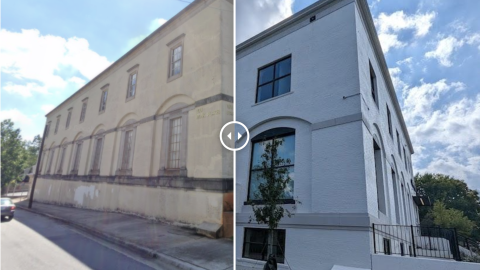
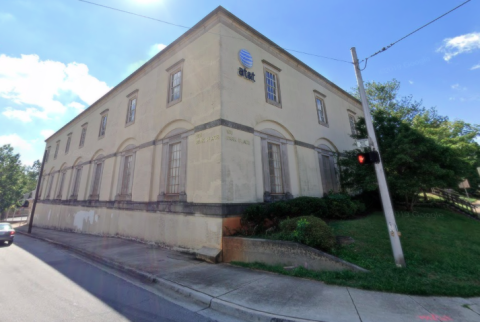
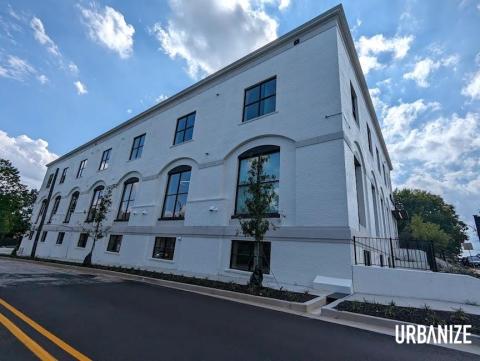
Two years after debut, Oakhurst condo conversion sniffs sellout
Josh Green
Tue, 05/06/2025 – 08:46
An adaptive-reuse project where Oakhurst meets Kirkwood is approaching sellout status nearly two years after its debut, with final new condos priced at less than $200,000, according to sellers. Called Park 108, the condo venture by national developer Toll Brothers aimed to fill a void of for-sale multifamily product on the southwest side of Decatur by transforming a building that’s stood for nearly a century. Renovation work on the 33-unit building took about two years. Eric White, Toll Brothers division president in Georgia, says the two remaining Park 108 homes are both priced at $199,900. The Forsyth plan (one bedroom, one bathroom) counts 632 square feet on the first floor, while the Claire studio plan has 504 square feet on the second floor. The latter was discounted by nearly $15,000 last month.
Toll Brothers
Josh Green/Urbanize Atlanta
Floorplans for remaining condos can be viewed here (see floors one and two), while a peek inside the one-bedroom unit is over here. According to listing services, the two remaining Park 108 condos qualify for the Decatur Land Trust Model, which means specific qualifications must be met. DLT’s model goes that homes will be sold to new owners, but the land beneath them will be kept in a trust. Should new homeowners sell in the future, the DLT’s ground-lease program is meant to ensure the properties retain their affordability permanently by capping the price at which owners can sell, DLT officials previously told Urbanize Atlanta. DLT also typically retains a long-term option to buy the homes back if owners choose to sell and move. Following its completion in summer 2023, the revised three-story Park 108 structure offered a range of floorplans (18 total) from 500-square-foot studios to airy two-bedroom units with ceilings climbing up to 14 feet. Some included a second story, with prices topping out around $600,000. In-home features include wide-plank hardwood flooring, oversized windows, and custom cabinetry. Like transit access, the condos’ character is intended to make up for the building’s lack of amenities, such as a swimming pool and balconies.
This two-bedroom unit was priced just shy of $600,000. Toll Brothers
Perks of the location include MARTA’s East Lake station, situated across the street. Oakhurst Village is a few blocks in the other direction, and College Avenue’s charming strips of retail and restaurant offerings are also nearby.The 1930s building once functioned as a Southern Bell telephone company switchboard facility; more recently, it was an AT&T training center.Find more context and images for the Park 108 project in the gallery above. …Follow us on social media: Twitter / Facebook/and now: Instagram • Oakhurst news, discussion (Urbanize Atlanta)
Tags
108 Park Place
Thrive Residential
Park 108
MARTA
Toll Brothers
East Lake MARTA Station
Southern Bell
Atlanta Condos
Adaptive-Reuse
Decatur
City of Decatur
Adaptive-Reuse Development
Adaptive Reuse
Atlanta Condos for Sale
Decatur Condos
Decatur Condos for Sale
Images
The brick structure’s frontage on East Lake Drive, prior to renovations. Google Maps
The 1930s building and parking prior to renovations, across the street from East Lake MARTA station. Google Maps
Layout of first-floor units and onsite storage. Courtesy of Toll Brothers/Park 108
The corner where Park Place meets East Lake Drive in Oakhurst. Josh Green/Urbanize Atlanta
Josh Green/Urbanize Atlanta
Josh Green/Urbanize Atlanta
This two-bedroom unit was priced just shy of $600,000. Toll Brothers
Toll Brothers
Toll Brothers
Subtitle
Two new units unsold at adaptive-reuse project near MARTA—both priced (barely) in the $100Ks
Neighborhood
Oakhurst
Background Image
Image
Associated Project
Park 108
Before/After Images
Before Image
Image
After Image
Image
Sponsored Post
Off Read More
Two years after debut, Oakhurst condo conversion sniffs sellout
Josh Green
Tue, 05/06/2025 – 08:46
An adaptive-reuse project where Oakhurst meets Kirkwood is approaching sellout status nearly two years after its debut, with final new condos priced at less than $200,000, according to sellers. Called Park 108, the condo venture by national developer Toll Brothers aimed to fill a void of for-sale multifamily product on the southwest side of Decatur by transforming a building that’s stood for nearly a century. Renovation work on the 33-unit building took about two years. Eric White, Toll Brothers division president in Georgia, says the two remaining Park 108 homes are both priced at $199,900. The Forsyth plan (one bedroom, one bathroom) counts 632 square feet on the first floor, while the Claire studio plan has 504 square feet on the second floor. The latter was discounted by nearly $15,000 last month.
Toll Brothers
Josh Green/Urbanize Atlanta
Floorplans for remaining condos can be viewed here (see floors one and two), while a peek inside the one-bedroom unit is over here. According to listing services, the two remaining Park 108 condos qualify for the Decatur Land Trust Model, which means specific qualifications must be met. DLT’s model goes that homes will be sold to new owners, but the land beneath them will be kept in a trust. Should new homeowners sell in the future, the DLT’s ground-lease program is meant to ensure the properties retain their affordability permanently by capping the price at which owners can sell, DLT officials previously told Urbanize Atlanta. DLT also typically retains a long-term option to buy the homes back if owners choose to sell and move. Following its completion in summer 2023, the revised three-story Park 108 structure offered a range of floorplans (18 total) from 500-square-foot studios to airy two-bedroom units with ceilings climbing up to 14 feet. Some included a second story, with prices topping out around $600,000. In-home features include wide-plank hardwood flooring, oversized windows, and custom cabinetry. Like transit access, the condos’ character is intended to make up for the building’s lack of amenities, such as a swimming pool and balconies.
This two-bedroom unit was priced just shy of $600,000. Toll Brothers
Perks of the location include MARTA’s East Lake station, situated across the street. Oakhurst Village is a few blocks in the other direction, and College Avenue’s charming strips of retail and restaurant offerings are also nearby.The 1930s building once functioned as a Southern Bell telephone company switchboard facility; more recently, it was an AT&T training center.Find more context and images for the Park 108 project in the gallery above. …Follow us on social media: Twitter / Facebook/and now: Instagram • Oakhurst news, discussion (Urbanize Atlanta)
Tags
108 Park Place
Thrive Residential
Park 108
MARTA
Toll Brothers
East Lake MARTA Station
Southern Bell
Atlanta Condos
Adaptive-Reuse
Decatur
City of Decatur
Adaptive-Reuse Development
Adaptive Reuse
Atlanta Condos for Sale
Decatur Condos
Decatur Condos for Sale
Images
The brick structure’s frontage on East Lake Drive, prior to renovations. Google Maps
The 1930s building and parking prior to renovations, across the street from East Lake MARTA station. Google Maps
Layout of first-floor units and onsite storage. Courtesy of Toll Brothers/Park 108
The corner where Park Place meets East Lake Drive in Oakhurst. Josh Green/Urbanize Atlanta
Josh Green/Urbanize Atlanta
Josh Green/Urbanize Atlanta
This two-bedroom unit was priced just shy of $600,000. Toll Brothers
Toll Brothers
Toll Brothers
Subtitle
Two new units unsold at adaptive-reuse project near MARTA—both priced (barely) in the $100Ks
Neighborhood
Oakhurst
Background Image
Image
Associated Project
Park 108
Before/After Images
Before Image
Image
After Image
Image
Sponsored Post
Off



